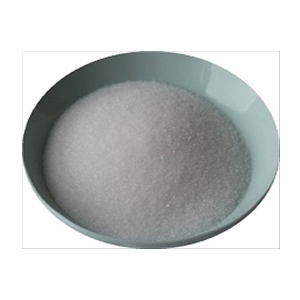
Equimolecular compound of calcium di[2-(acetyloxy)benzoate] and urea.
Content: 99.0 per cent to 101.0 per cent (anhydrous substance).
First identification: B, E.
Second identification: A, C, D, E.
A. Ultraviolet and visible absorption spectrophotometry.
Test solution: Dissolve 0.250 g in water and dilute to 100.0 ml with the same solvent. To 1.0 ml of the solution add 75 ml of water and 5 ml of dilute hydrochloric acid, mix and dilute to 100.0 ml with water. Examine immediately.
Spectral range: 220-350 nm.
Absorption maxima: At 228 nm and 276 nm.
Specific absorbances at the absorption maxima:
at 228 nm: 363 to 379,
at 276 nm: 49 to 53.
B. Infrared absorption spectrophotometry. Comparison: Ph. Eur. reference spectrum of carbasalate calcium.
C. Dissolve 0.1 g in 10 ml of water, boil for 2 min and cool. The solution gives reaction (a) of salicylates.
D. Heat 0.2 g with 0.2 g of sodium hydroxide; a yellow or yellowish-brown colour is produced and the vapour turns red litmus paper blue.
E. It gives reaction (a) of calcium.
Appearance of solution: The solution is not more opalescent than reference suspension II and is colourless.
Dissolve 2.5 g in 50 ml of water.
Related substances: Maximum 0.1 per cent, expressed as acetylsalicylsalicylic acid.
In a 100 ml volumetric flask, dissolve 0.150 g in 10 ml of 0.1 M tetrabutylammonium hydroxide in 2-propanol . Allow to stand for 10 min shaking occasionally. Add 8.0 ml of 0.1 M hydrochloric acid and 20.0 ml of a 19 g/l solution of disodium tetraborate and mix. While swirling continuously, add 2.0 ml of a 10 g/l solution of aminopyrazolone and 2.0 ml of a 10 g/l solution of potassium ferricyanide. Allow to stand for 2 min, dilute to 100.0 ml with water, mix and allow to stand for 20 min. Measure the absorbance of the solution at the absorption maximum at 505 nm using water as the compensation liquid. The absorbance is not greater than 0.125.
Impurity C: Maximum 0.5 per cent.
In a 100 ml volumetric flask, dissolve 0.200 g in 80 ml of water and add 10 ml of a 10 g/l solution of ferric nitrate in a 80 g/l solution of dilute nitric acid. Dilute to 100.0 ml with water. Immediately after preparation, measure the absorbance of the solution at the absorption maximum of 525 nm using water as the compensation liquid. The absorbance is not greater than 0.115.
Sodium: Maximum 0.10 per cent.
Heavy metals: Maximum 10 ppm.
Water: Maximum 0.1 per cent, determined on 1.000 g. Use a mixture of 15 ml of anhydrous methanol and 15 ml of dimethylformamide as the solvent.
In a flask with a ground-glass stopper, dissolve 0.400 g in 25 ml of water. Add 25.0 ml of 0.1 M sodium hydroxide . Close the flask and allow to stand for 2 h. Titrate the excess of alkali with 0.1 M hydrochloric acid , using 0.2 ml of PhPh solution. Carry out a blank titration. 1 ml of 0.1 M sodium hydroxide is equivalent to 22.92 mg of C19H18CaN2O9.
Specified impurities: A, B, C.
A. 2-(acetyloxy)benzoic anhydride,
B. 2-[[2-(acetyloxy)benzoyl]oxy]benzoic acid (acetylsalicylsalicylic acid),
C. 2-hydroxybenzoic acid (salicylic acid).